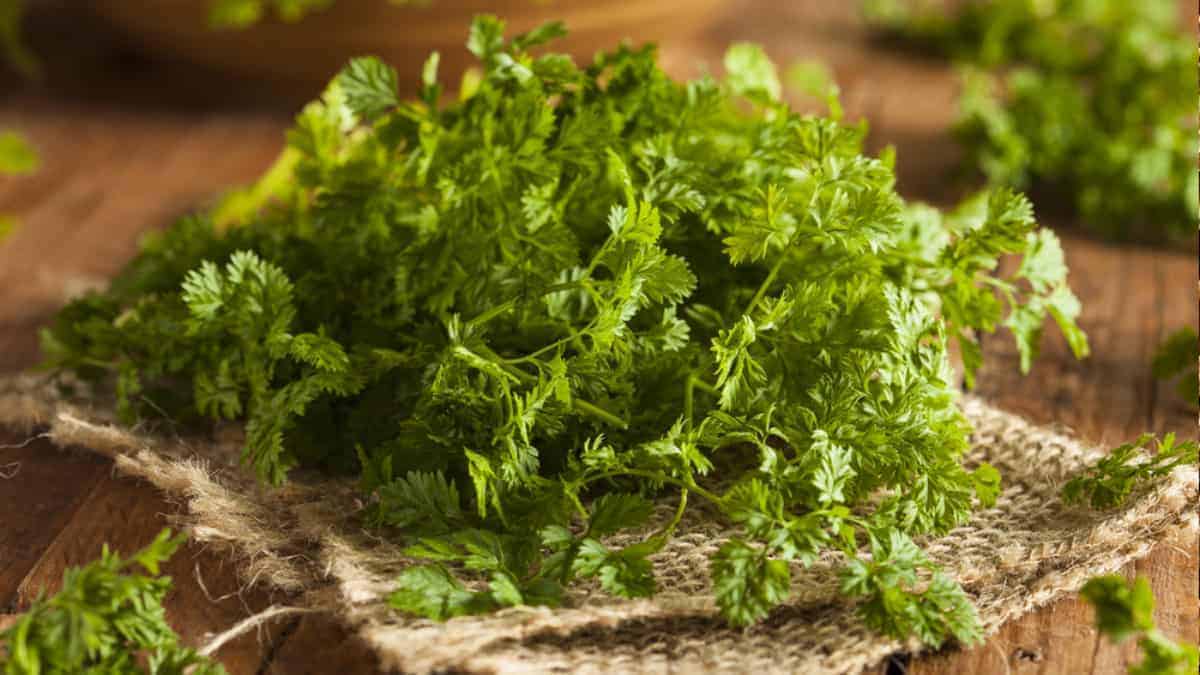Description
Chervil is a delicate curly green-leafed spring herb (also known as French parsley) popular through western Europe.
What does chervil taste like?
The flavor of chervil combines grassy notes, aniseed, and licorice with a delicate herbaceous aroma and hints of tarragon and parsley.
Where does chervil come from?
The name chervil or chaerophyllon comes from the Greek meaning the herb of ‘rejoicing’.
The herb is a member of the parsley family native to the Caucasus which has been popularized throughout Europe.
Chervil Uses
Best used raw as its delicate flavor is lost in cooking and a popular ingredient of classic French cooking, also within the French classic ‘fines herbes’.
Chervil can be added to dishes and recipes such as vinaigrette, creamy sauces, soups, fish, salad, egg, light-butter sauces, stuffing, meat and fish.
Chervil Substitutes
- Tarragon: the aniseed in tarragon is more intense than chervil so use sparingly.
- Parsley: chervil is more subtle but similar in flavor profile.
- Fennel fronds: delicate with mild anise similar to chervil.
Chervil Compliments and Pairings
The light delicacy of chervil pairs well with eggs, fish, poultry, horseradish, peas, turnips, shellfish, lemon, courgette, fennel, cheese, yogurt, mushroom, asparagus, leek, potato, and vegetables.
Chervil Expiration and Storage
- Fresh: wrap in a damp kitchen cloth and refrigerate for up to a week.
- Dried: store in an airtight container and use within six months.
- Frozen: fresh herbs frozen at their peak can be stored in the freezer for up to six months.
Fun Facts About Chervil
- Due to their similarities chervil is also sometimes referred to as ‘french parsley’.
- There are four main varieties of chervil including garden chervil, chervil root, wild chervil, and bur chervil.
Popular Chervil Recipes
- Chervil buttered potatoes
- Celeriac and chervil soup
- Herb omelet
- Potato salad
- Bearnaise sauce
- Chicory and watercress salad
- Pate en croute
- Sauce gribiche
- Salsa verde

